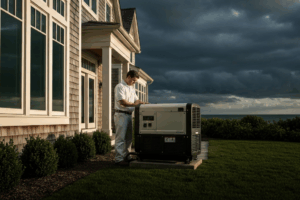How Do You Install a GFCI Outlet?
Introduction
Installing ground fault circuit interrupter outlets (GFCIs) is a critical task for electricians, ensuring protection against electric shock and compliance with NFPA 70 (NEC). GFCIs are vital in wet or damp locations, safeguarding occupants by interrupting power during ground faults. This guide details professional installation steps, NEC requirements, and safety protocols for reliable, code-compliant installations.
What Is a GFCI Outlet and How Does It Work?
A GFCI receptacle monitors current flow, comparing the hot wire’s outgoing current to the neutral wire’s return. In a balanced circuit, currents are equal. A ground fault (e.g., current leaking through a person) causes a ~4–6mA imbalance, triggering the GFCI to trip in milliseconds, preventing shock (NEC 210.8). The NEC mandates GFCIs in wet/damp areas like bathrooms, kitchens, garages, and outdoors (NEC 210.8(A)–(B)), ensuring components meet the accessible definition (NEC Article 100) for maintenance.
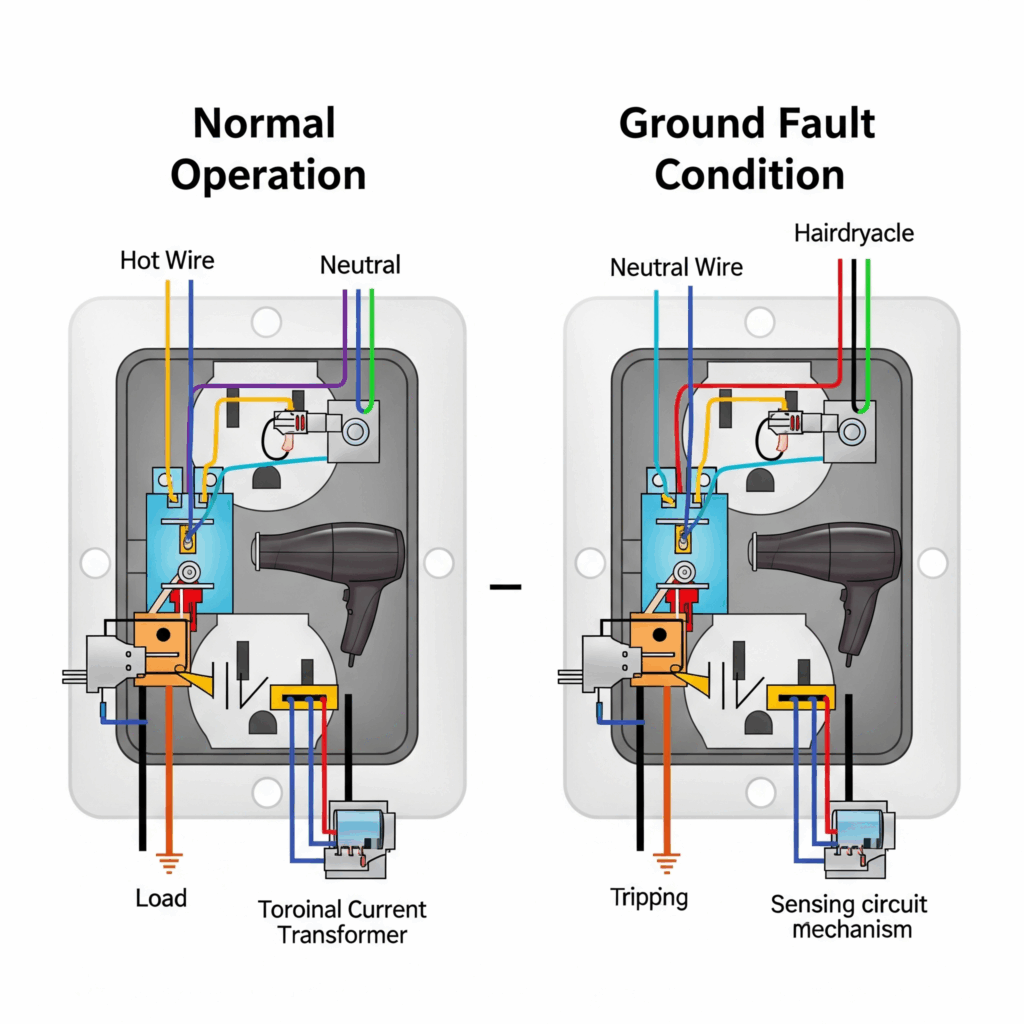
Mastering GFCI Installation for Safety and Compliance
Following NFPA 70 and NFPA 70E, electricians ensure safe GFCI installations that protect users and meet code standards. Proper techniques prevent hazards and ensure reliability.
Installation and Safety Procedures
Step 1: De-Energize the Circuit
De-energize the circuit at the breaker panel and verify with a non-contact voltage tester or multimeter (NFPA 70E 120.5). Follow lockout/tagout (LOTO) procedures (NFPA 70E 120.2) to prevent re-energization. Consult a wire ampacity chart (NEC Table 310.16) to ensure conductor sizing, accounting for de-rating if bundling >3 conductors (NEC 310.15(B)(3)(a)).
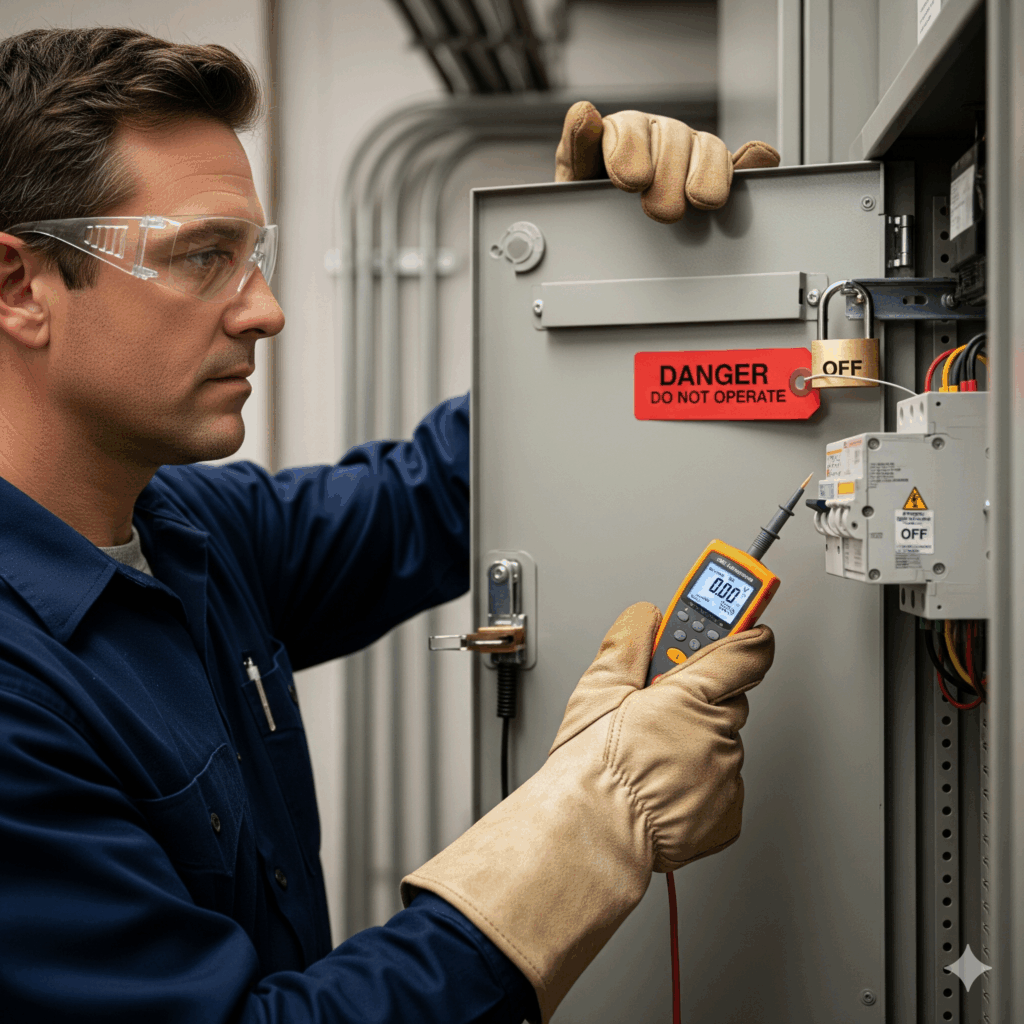
Step 2: Wire the GFCI
Identify LINE (incoming power) and LOAD (downstream outlets) terminals:
Attach the bare/green ground wire to the green grounding screw.
Incorrect LINE/LOAD connections disable GFCI functionality. For downstream protection, wire additional outlets to LOAD terminals. Example: In a bathroom, a single GFCI can protect multiple receptacles (NEC 210.8(A)).
Connect the black hot wire to the brass LINE terminal.
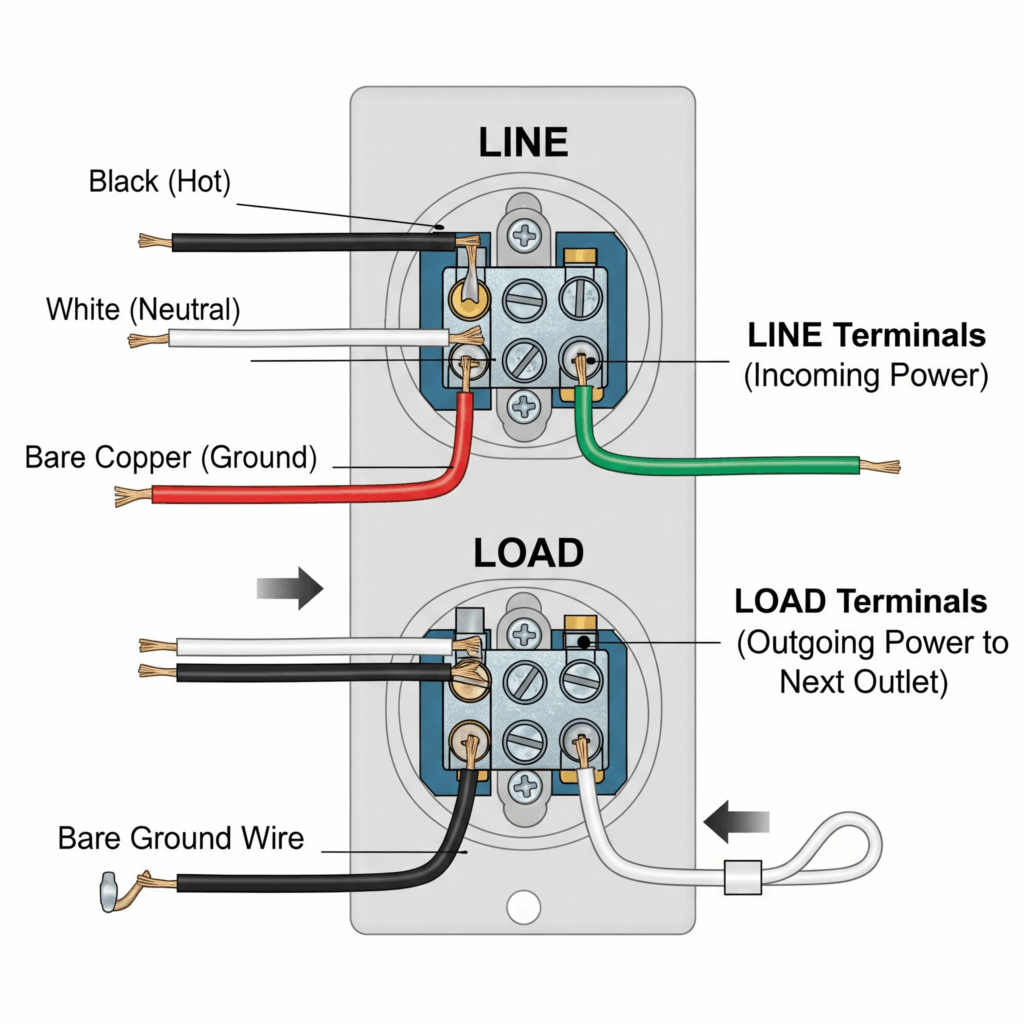
Step 3: Secure the Receptacle
Fold wires neatly, avoiding strain or pinching, and secure the GFCI into the electrical box (NEC 314.16 for box fill). Ensure clearances allow access per NEC’s accessible definition (Article 100). Use proper tying cables techniques (NEC 300.4) to organize wires without over-tightening.
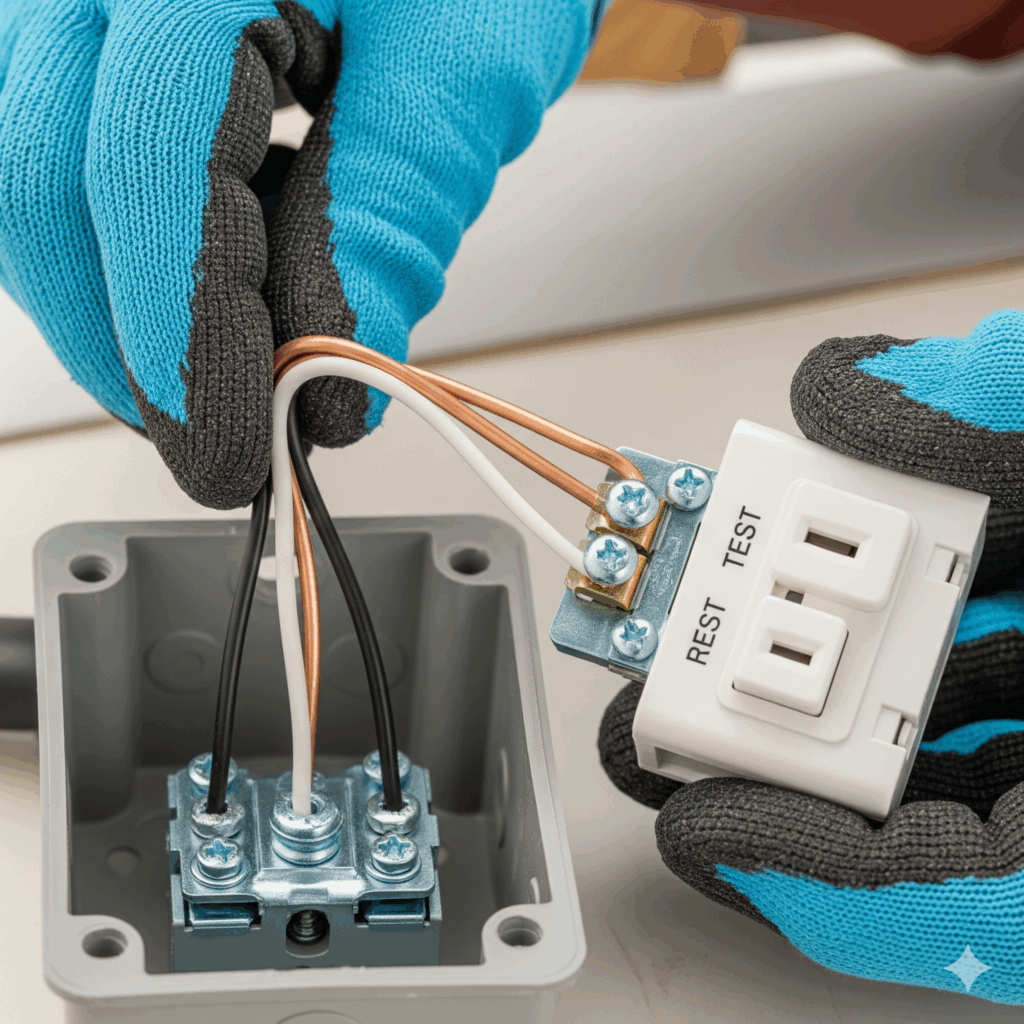
Step 4: Power and Test
Restore power, press the GFCI’s “RESET” button (should click), then press “TEST” to trip the circuit, confirming no power to the outlet or downstream devices (NEC 210.8). Repeat to ensure reliability.
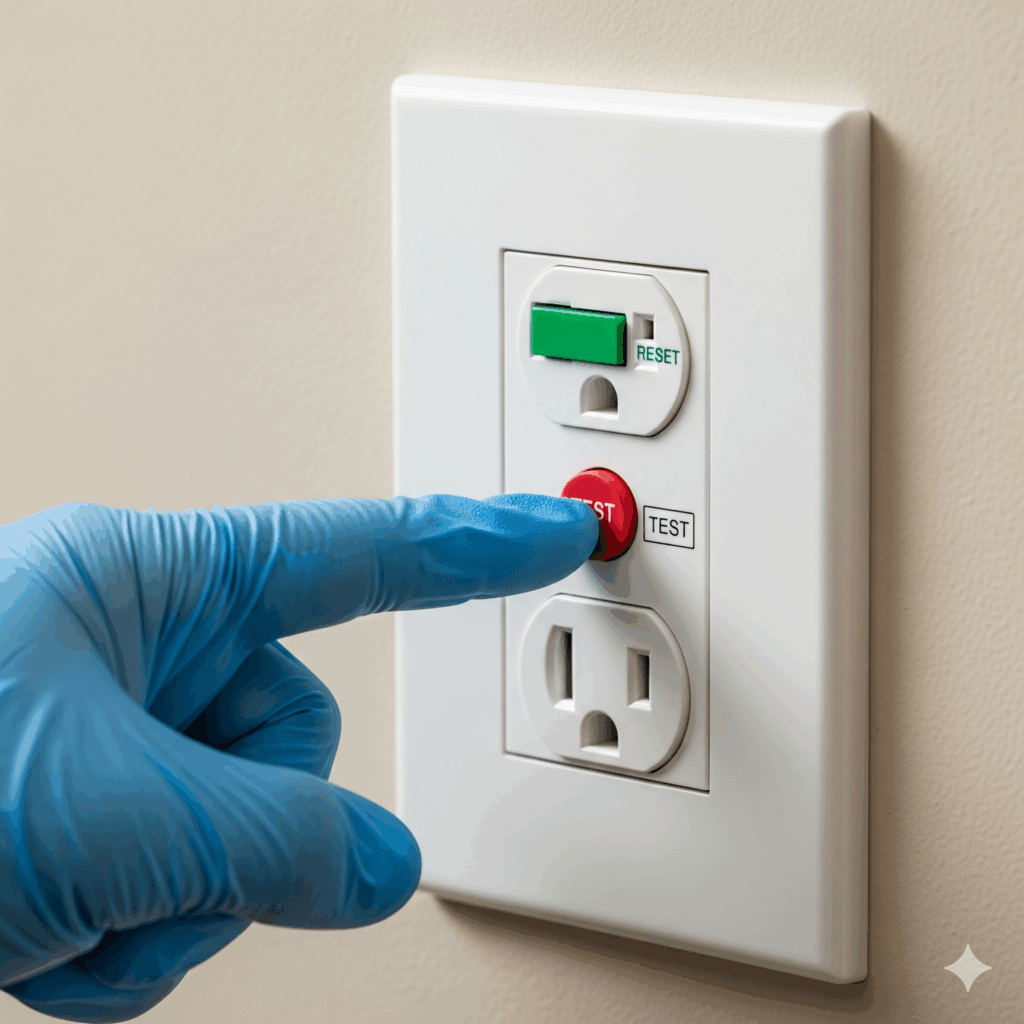
Safety Protocols
- PPE: Wear insulated gloves, arc-rated clothing, and safety glasses, especially near energized systems, to mitigate arc flash risks (NFPA 70E 130.7, 130.5).
- Verification: Always test circuits with a voltage tester before work (NFPA 70E 120.5).
- Surge Protection: Install protective surge devices (SPDs) to safeguard equipment from voltage spikes, not as a GFCI substitute (NEC 285).
- Cable Management: Use UV-resistant ties or Velcro for organized, damage-free wiring (NEC 300.4, 800.24).
Conclusion
Installing ground fault circuit interrupter outlets requires precision, adherence to NFPA 70 (NEC 210.8, 314.16) and NFPA 70E, and rigorous safety practices. By de-energizing circuits, wiring correctly, testing thoroughly, and organizing cables, electricians ensure safe, compliant installations that protect users from electrical hazards.
Take the next step in your professional growth! Visit Expert CE (https://expertce.com/) for all your continuing education needs.
Continuing Education by State
Select your state to view board-approved continuing education courses and requirements:
Disclaimer: The information provided in this educational content has been prepared with care to reflect current regulatory requirements for continuing education. However, licensing rules and regulations can vary by state and are subject to change. While we strive for accuracy, ExpertCE cannot guarantee that all details are complete or up to date at the time of reading. For the most current and authoritative information, always refer directly to your state’s official licensing board or regulatory agency.

